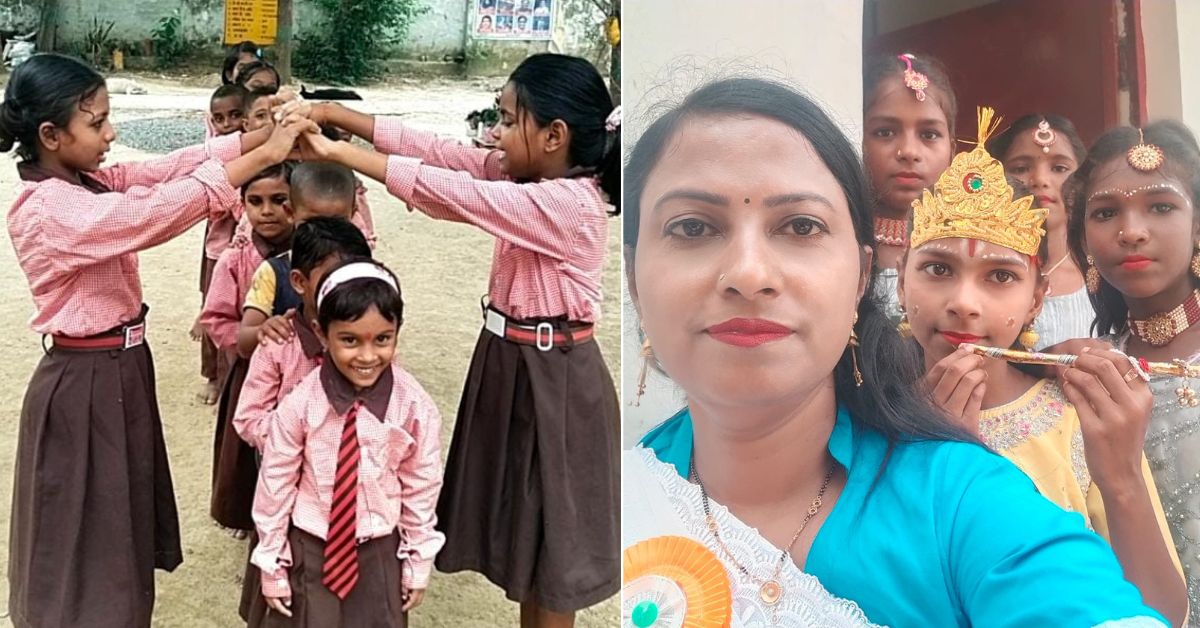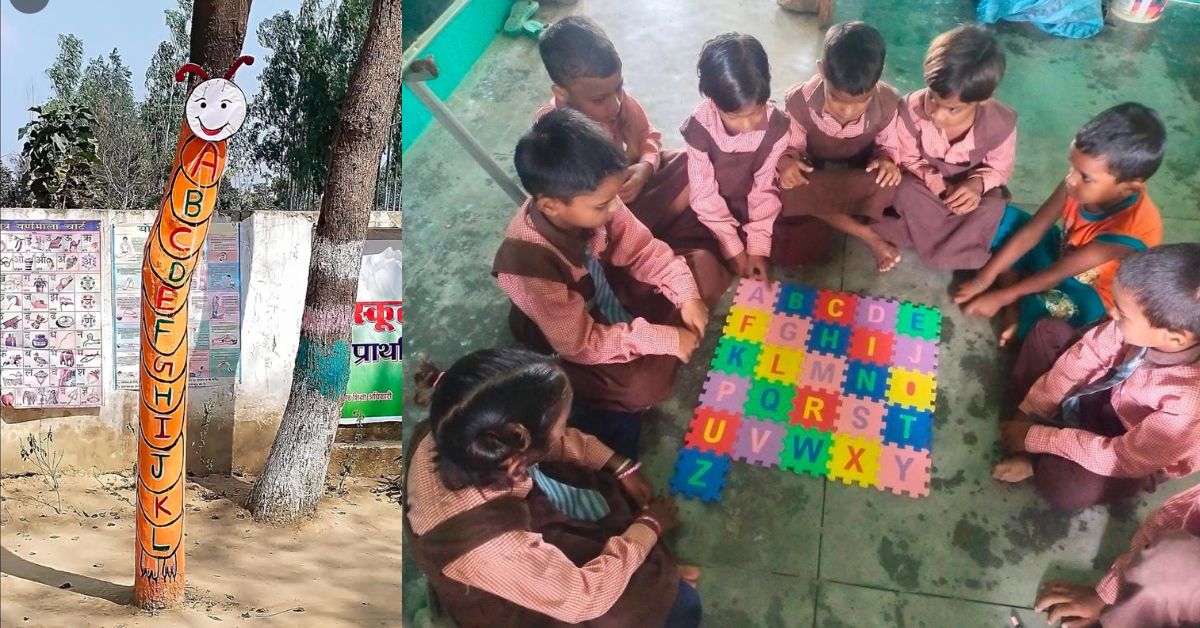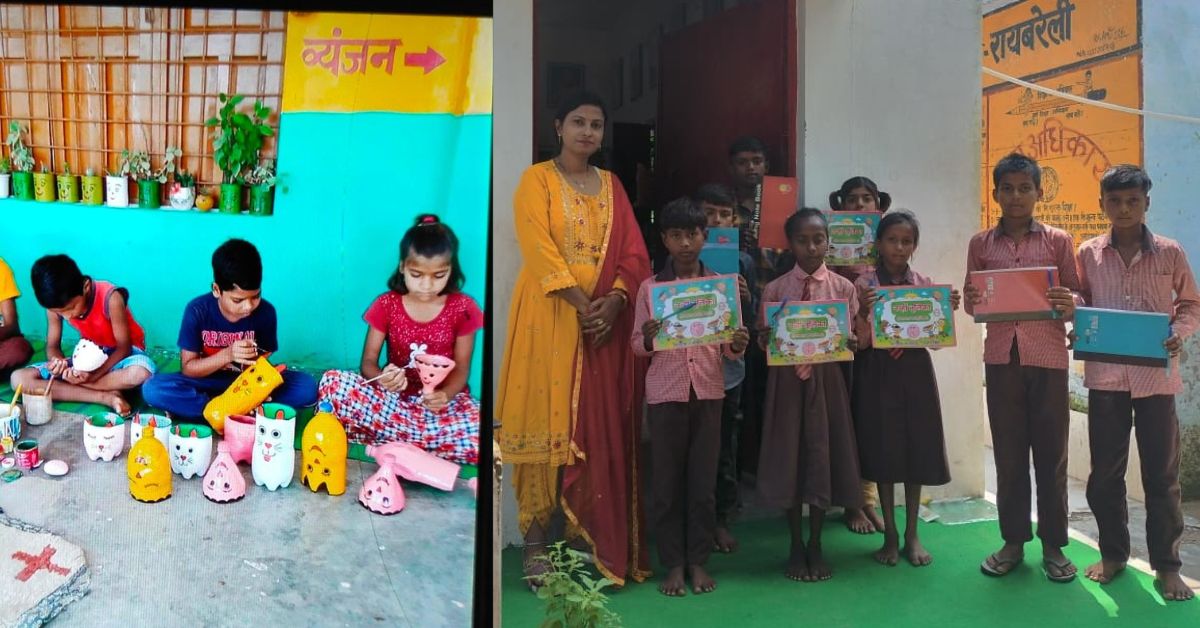
When Sangeeta Maurya first received her posting in a small village school in UP’s Raebareli district, she broke down in tears. Having cleared the challenging University Grants Commission National Eligibility Test (UGC NET), she had imagined herself in a well-equipped classroom, filled with eager students.
Instead, she found herself standing inside a crumbling building with broken benches, absent children, and silence that stretched down the dusty corridors.
She wondered if this was truly where her teaching journey would begin.
Today, 12 years later, she smiles when she recalls that moment. “If I hadn’t stayed,” she says, “I would never have learnt the true meaning of teaching.”
Wearing many hats
Sangeeta now teaches Sanskrit, English, and Hindi at an upper primary school in D Block, Raebareli. The school has only three teachers in total, each one covering multiple subjects. Between them, they handle everything from mathematics to science, whether or not it is their area of expertise.
“In rural schools, you are not just a subject teacher,” Sangeeta explains. “You are a counsellor, a friend, sometimes even a nurse or a mother figure.”
Advertisement

From empty classrooms to crowded mornings
Her day begins before dawn. By 8 AM, Sangeeta is already at the school gate, greeting children who walk in barefoot, their satchels bouncing against their backs. The sight warms her now, but it wasn’t always so.
“Out of 130 children enrolled, fewer than 30 attended regularly when I first joined,” she recalls.
She remembers her frustration. “We couldn’t just sit inside the classroom and wait. So after school hours, I would go door to door in the afternoons. I sat with parents, explained why education mattered, and why it was worth sending their children to school instead of making them work. Many of these children did odd jobs and spent their earnings on tobacco,” she shares. “Convincing parents and children was a battle. I begged at times, I reasoned at others, and I kept asking them to send their children to school at least one more day.”
Slowly, her persistence paid off. Within a month, attendance rose to 100 students. It wasn’t an easy victory; it meant knocking on doors daily, challenging traditions of child labour, and winning the trust of parents who had never experienced the benefits of education themselves.
Teaching beyond textbooks
Once the children began attending regularly, a new challenge emerged: holding their attention.

Conventional lesson plans fell flat. “The children didn’t want to just sit and listen,” she says. “They brightened up when I told stories, sang songs, or played games with them.”
Advertisement
She began using folk tales, riddles, and interactive activities to make learning enjoyable. Over time, the children started participating eagerly. They even role-played as teachers, doctors, and police officers. “The classroom filled with laughter and energy. When the children laugh and play, they learn without even realising it,” she explains.
For Sangeeta, these moments are priceless. “When a child tells me, ‘I want to be a teacher like you,’ my heart swells with pride.”
Balancing two worlds
Outside the school, Sangeeta is a mother and wife. Married in Azamgarh, with her parental home in Raebareli, she balances household responsibilities with teaching. Her son, now seven, once had clashing school timings.

“It was tough,” she admits. “But I never let my struggles show in front of my students. They deserve my full attention.”
More than a teacher
Sangeeta’s role extends beyond academics. She eats midday meals sitting cross-legged with the children. “When they see me eating from the same kind of plate as theirs, they feel I am one of them,” she explains.
During seasonal fevers, she keeps basic medicines in the staffroom. “On days when rice is served in the midday meal, I avoid giving it to sick children, as rice is believed to aggravate colds. Instead, I share my tiffin with them before giving medicine,” she explains.
Advertisement
Her school day officially ends at 2 PM, but the work continues — preparing lesson plans, completing paperwork, and visiting families whose children miss school.
The true reward of teaching
For Sangeeta, teaching has never been just a job. It is a mission. “In villages, teaching is as much about care as it is about books. You have to build trust, spark curiosity, and show children that education can change their lives.”
She pauses, then adds softly, “When I started, the classrooms were empty, and I cried. Today, those rooms echo with chatter, laughter, and learning. That is my biggest reward.”











































































































































